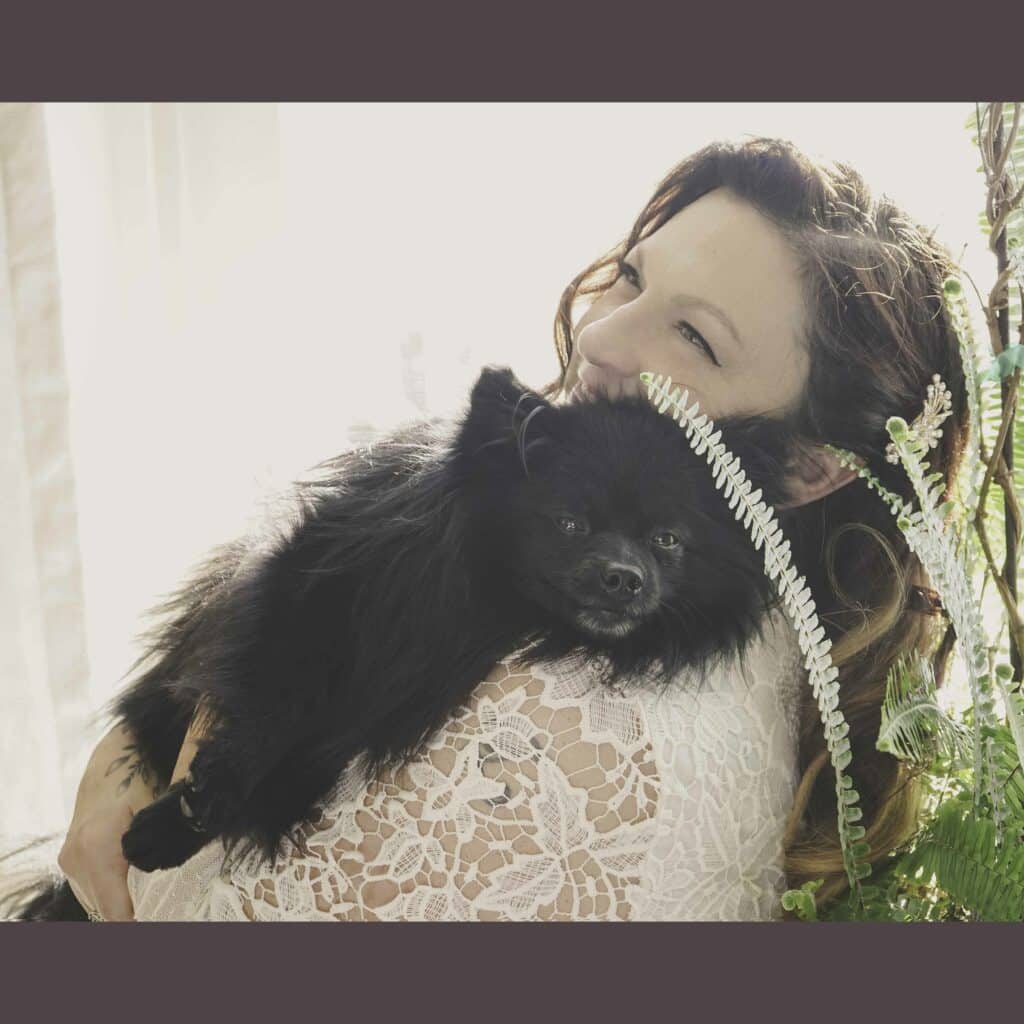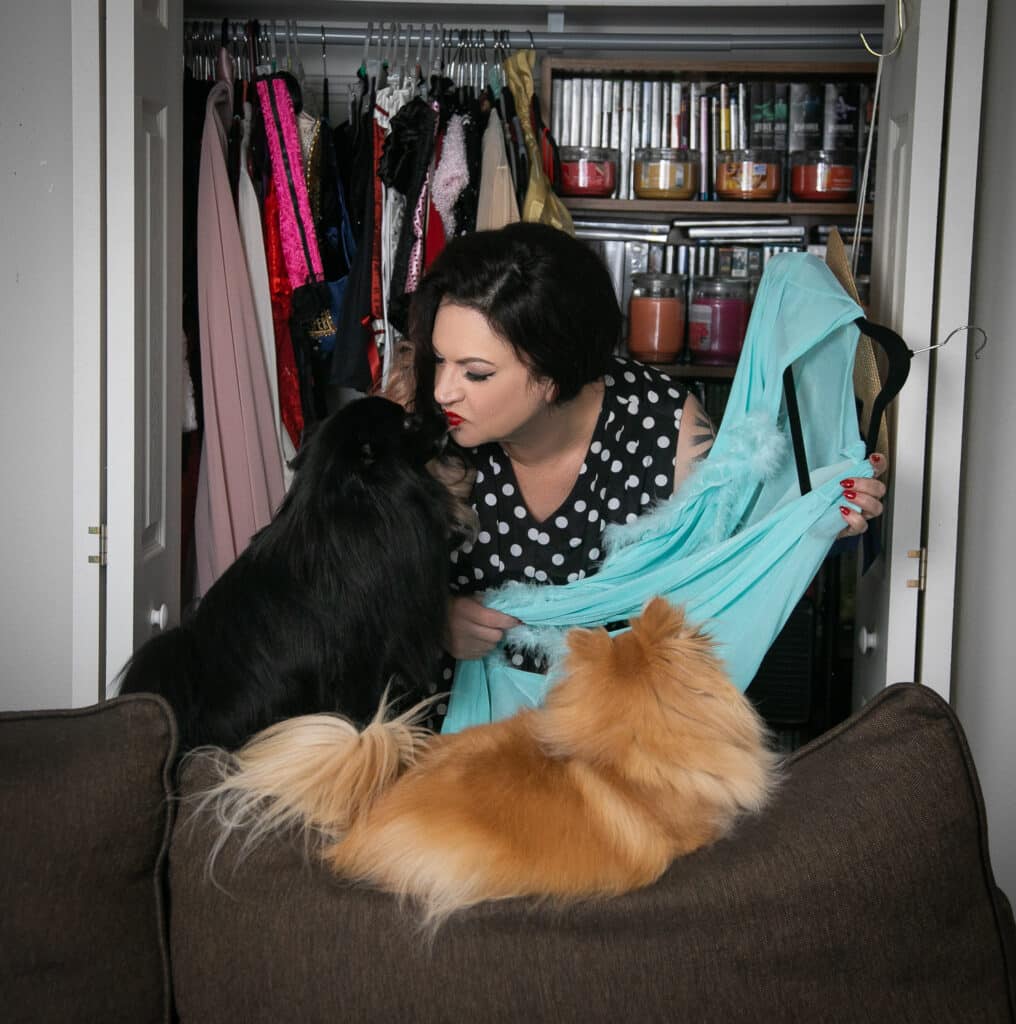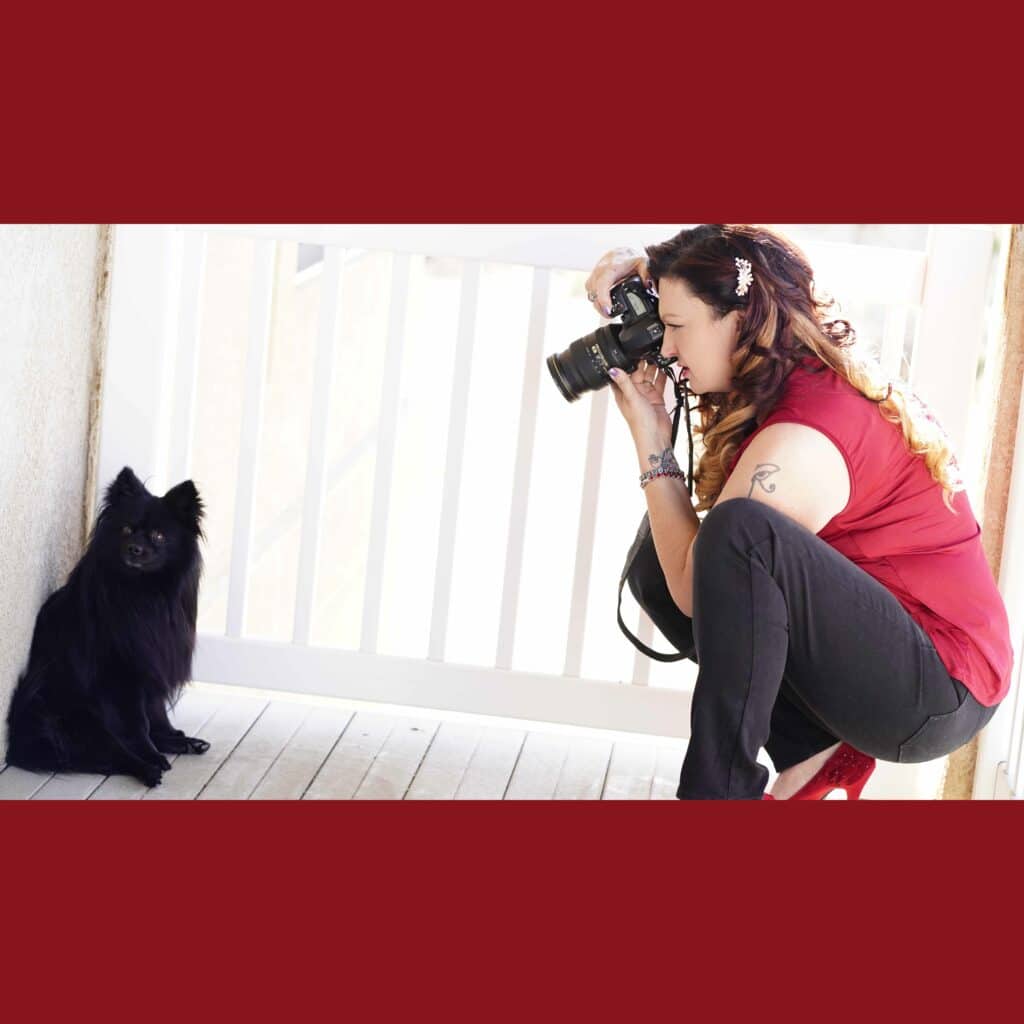
The “Dog Days of Summer” is taking on a whole new meaning this year as much of the world is experiencing extreme heat, but I want to take the opportunity of this season to talk about a particular category of dogs that holds a special place in my heart… service dogs. As I’ve begun to photograph dogs and their partners I feel the need to share why this is important to me.
I have an amazing relationship with my two service dogs, Shadow and Layla. If you’ve been to my studio, pursued my Instagram account, or met me at a trade show you’ve already been introduced to them. They are invaluable companions who enrich my life in so many ways.

Aren’t “service dogs” just … dogs?
Service dogs are different from pets or “emotional support animals” in that they are trained to perform specific tasks that aid a person with a disability. It’s my opinion that all dogs are beneficial, but service dogs have the temperament and skill to “work” for their owner. It wasn’t until the 1990s that the Americans with Disabilities Act was passed, allowing canine partners of humans with disabilities the same rights in public spaces as a “person.” The benefits of this arrangement are expansive.
Physical and Emotional Benefits of Service Dogs
Not all service dog tasks are visible to bypassers, such as the classic “seeing eye dog” for vision-impaired persons. Service dogs can be trained to aid persons with an almost never-ending list of tasks… listening for sounds (like alarms, crying infants, etc…) for the hearing-impaired, and picking up objects for persons with mobility restrictions. They can alert low/high-blood sugar for diabetics and detect on-coming seizures and anxiety attacks for their handlers before an emergency occurs.
My Pomeranian angels are a subset of service animals classified as “psychiatric service dogs” who are trained to help persons with psychiatric conditions that impede on their daily lives. Shadow, the black floofy pup you most often see in public, alerts me to the onset of my medical condition by jumping up on me, pawing at me or getting into my lap when he senses my condition is making an entrance. Once he has my attention I stop what I’m doing and he applies therapeutic pressure on my body until I become calm. He is my wingman and accompanies me nearly everywhere I go. Layla relieves him from his hard work at the end of the day, becoming my constant companion at home while he rests.
Aside from their trained tasks, service dogs are excellent emotional partners as well. Persons with disabilities often experience great loneliness, but service dogs provide constant companionship. Eliminating the constant need for human help often helps people feel like less of a burden on their family and friends, increasing that awesome feeling of independence. Being able to get out in public and do things that were once too difficult to do alone improves a person’s ability to self-improve and make positive life changes.
It’s estimated that there are about 500,000 service dogs hard at work in the US alone… that’s a mighty crew! And since 50%-70% of service dogs in training fail to meet standards, the four-legged heroes who successfully meet all markers for being an aid to humans exhibit a wide range of skills and abilities to form deep connections.

Community Benefits
Personal benefits for humans aside, service dogs compensate their entire community as a whole, which is something that my staff has been thinking about as I’ve begun photographing these extraordinary relationships.
Service dogs give us an increased awareness and sensitivity to persons with disabilities in our neighborhoods and cities, expanding our compassion and understanding of what changes we can make to be more inclusive of all our community members. They make public spaces more comfortable by reducing the number of unmet needs and the anxiety of the bystander who isn’t sure how to (or if to) help. They help strike up conversations between persons, which may not have otherwise occurred, strengthening relationships and forming new friendships. They also assist in emergency situations when an on-looker may be clueless as to how to take action.
I am gaining an immense amount of pleasure in taking photos of service dogs and getting to know the unique relationship between them and their human counterparts. In our next newsletter we’ll talk about the well-being of the dogs themselves and how you can nurture and honor the special relationship you have with your dogs, service or pet variety. Till then, take a pop over to my Instagram feed to see my furry workers and tag @photographybykrisleen in any pics you post of your dogs!

